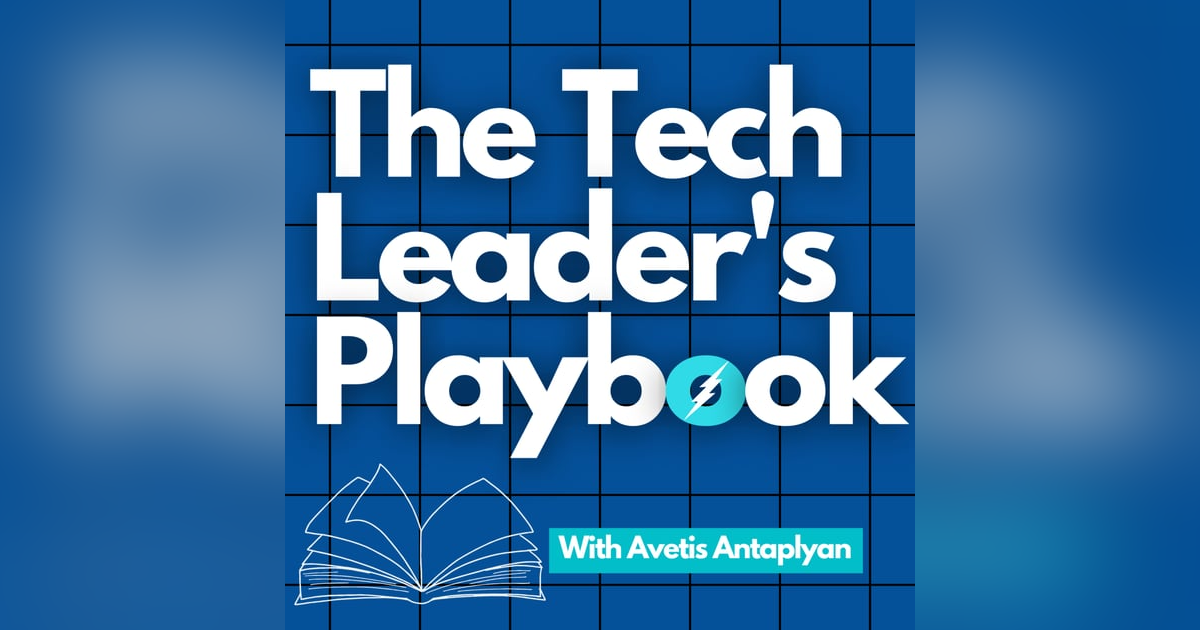How to Know When It’s Time to Pivot—And What to Do Next

In this episode of The Tech Leader's Playbook, Avetis Antaplyan sits down with Russ Hawkins, a seasoned three-time CEO renowned for reviving and scaling struggling startups into profitable, exit-ready companies. With a background rooted in sales and a practical MBA earned through hands-on transformation work alongside McKinsey and AT&T, Russ shares his battle-tested playbook for turning chaos into clarity.
Together, they unpack Russ’s journey from humble beginnings to orchestrating successful pivots in tech companies across hardware, software, and analytics. He reveals how he assesses leadership, evaluates products, and identifies untapped markets — even amidst fierce competition and failing patents. Russ emphasizes the importance of listening to customers, understanding competitors, and making quick, strategic decisions based on data.
The conversation also explores signs that a pivot is needed, how to test for willingness to pay, and what makes a company attractive for acquisition — especially in the age of private equity dominance. This is a must-listen for founders, investors, and anyone steering companies through change, disruption, or scale.
Takeaways
Turnarounds require deep customer and competitor understanding — listen more than you speak.
Growth rate and churn are two of the clearest signs a pivot is necessary.
Don’t underestimate small, underserved market segments — they can be goldmines.
Losing patent protection should trigger urgent strategic reassessment.
Price high and validate value — underpricing can signal poor quality.
Strategic pivots often mean repositioning your product, not reinventing it.
Talk to everyone: competitors, customers, staff, and trusted advisors.
Testing willingness to pay should be structured around real customer problems.
Cultivate private equity relationships early — most exits go this route now.
Always “lose quickly” in sales — avoid staying too long in the friend zone.
Leadership assessments should focus on shared values, not just resumes.
A strong turnaround starts with understanding the product’s true capabilities.
Chapters
00:00 Competitive Weaknesses and Sales Foundations
01:30 The Accidental CEO vs. the Professional CEO
03:45 Russ’s Background: Firefighting Roots to Sales Leadership
06:30 The AT&T Breakup and Working with McKinsey
09:00 First CEO Role and Million-Dollar Exit
11:00 Pivoting a Failing Video Tech Company
13:00 Losing Patent Protection and Facing Better-Funded Competitors
15:00 Learning from Competitors and Going Where They Aren’t
17:00 Talking to Customers, Founders, and Trusted Advisors
20:30 Finding Untapped Markets with Existing Technology
23:00 Pivoting Hardware to Telecom Use Cases
25:00 The Benefits of Private Equity vs. Venture Capital
27:00 When a Pivot is Necessary: Signals and External Pressures
29:30 Learning from Mistakes and Backing the Wrong Tech
31:30 Quick Evaluation of Leadership and Sales Team Fit
35:00 Researching New Market Opportunities with Your Team
39:00 Willingness to Pay and the Dangers of Undervaluing
43:00 The Case for Testing High Prices First
45:00 Strategic Exits: PE Ecosystem vs. Traditional Acquirers
48:30 Why Strategic Buyers Need to See Product Fit
50:00 When Founders’ Emotional Attachment Skews Valuation
53:00 Russ’s Favorite Learning Activity: Reading Biographies
55:00 Final Advice: Know Your Product, Know Your Customer, Prioritize Relationships
Russ Hawkins’s Social Media Links:
https://www.linkedin.com/in/russhawkins/
Russ Hawkins’s Website:
Resources and Links:












